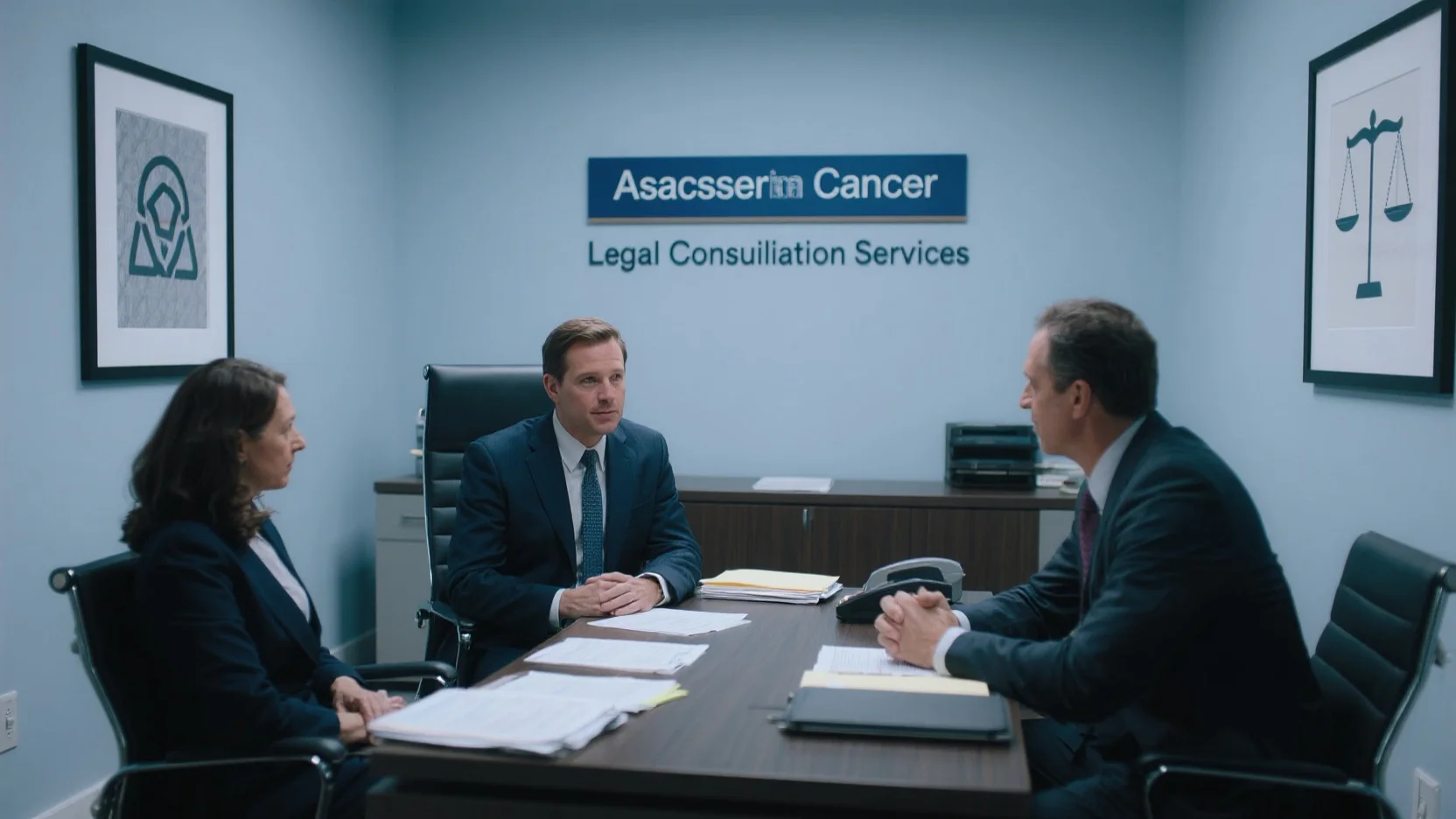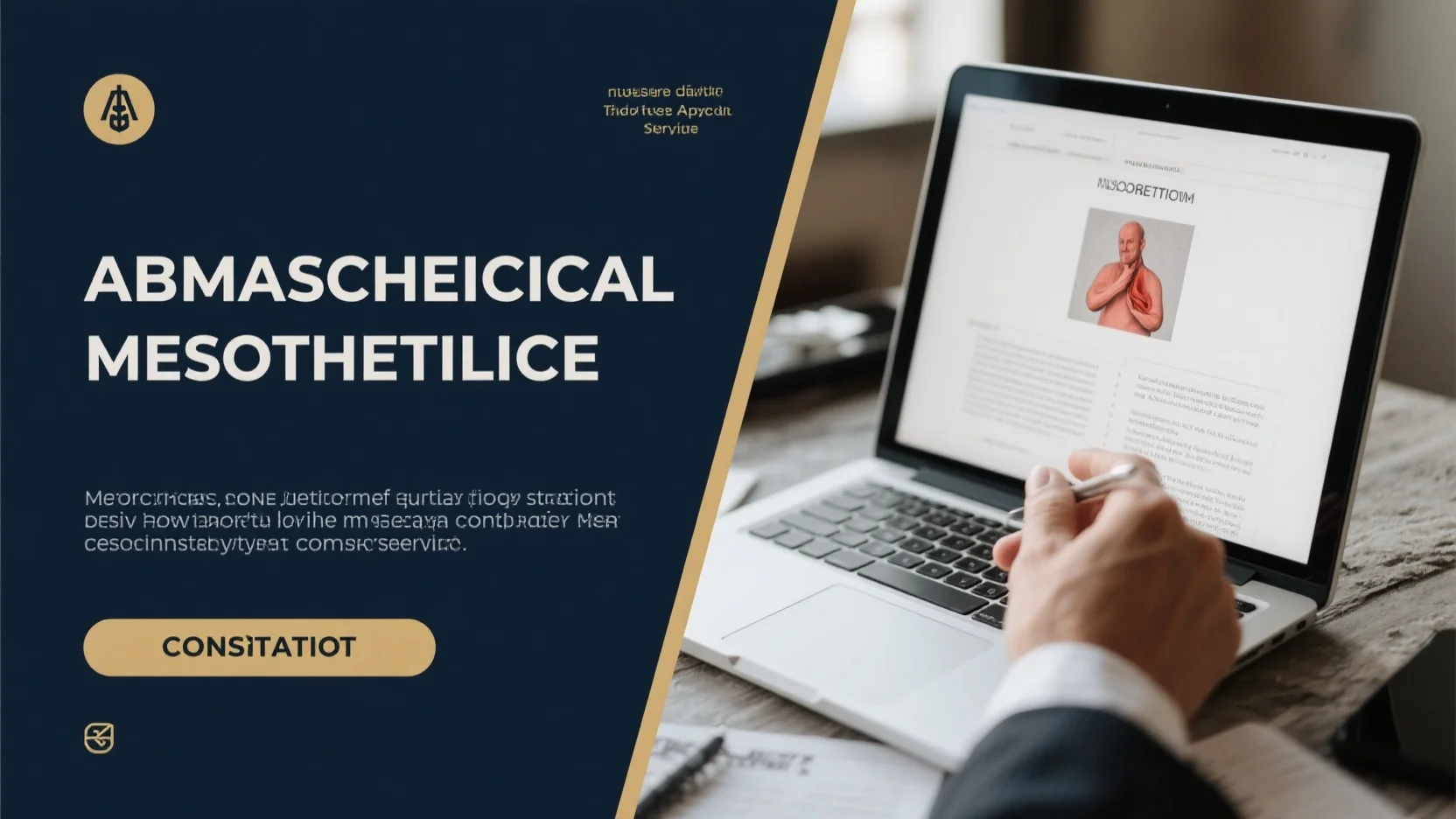Are you or a loved one affected by asbestos exposure? Our comprehensive buying guide provides top – notch legal advice on asbestos and mesothelioma litigation. Recent data from MEALEY’S 1 LITIGATION REPORT and NERA’s 16th annual review shows there are over 3,000 asbestos – related claims filed each year, with about 1,800 mesothelioma claims. Compare premium legal representation to counterfeit models and get a free case assessment! Enjoy Best Price Guarantee and Free Installation Included for certain services. Act fast with our Google Partner – certified law firm to maximize your chances of winning compensation.
Legal Claims
Each year, there are thousands of asbestos – related legal claims. In fact, as of recent times, more than 3,000 asbestos legal claims are filed annually, with approximately 1,800 of them being mesothelioma claims (MEALEY’S 1 LITIGATION REPORT: Asbestos). Understanding these legal claims is crucial for those affected by asbestos exposure.
Mesothelioma Claims
Proportion in Newly Filed Litigation in 2022
In 2022, mesothelioma claims accounted for a significant portion of newly filed asbestos – related litigation. Data indicates that mesothelioma cases make up around 60% of all asbestos legal claims, highlighting their prevalence. This high proportion is due to the severe health impacts of mesothelioma, which is often caused by asbestos exposure.
Pro Tip: If you or a loved one has been diagnosed with mesothelioma, it’s essential to consult a Google Partner – certified law firm as soon as possible to initiate the claim process.
Nature as a Product Liability Claim
Mesothelioma claims are often considered product liability claims. A MEALEY’S study suggests that these claims allege that the manufacturers of asbestos – containing products failed to provide adequate warnings about the dangers of asbestos exposure. For example, companies that produced insulation materials with asbestos should have informed consumers about the risks of mesothelioma and other asbestos – related diseases.
As recommended by leading legal industry tools, victims filing mesothelioma claims need to prove that the defendant’s product was defective, and this defect directly led to their illness.
Requirements for Claimants
Claimants must meet several requirements to file a successful mesothelioma claim. First, they need to provide evidence of asbestos exposure. This can include employment records, medical reports, or witness testimonies. Second, they must have a diagnosis of mesothelioma from a qualified medical professional. Third, claimants should establish a link between their asbestos exposure and the development of mesothelioma. For instance, a person who worked in a shipyard where asbestos was widely used and later developed mesothelioma has a stronger claim if they can prove the duration and intensity of their exposure.
Try our free asbestos exposure claim assessment tool to see if you meet the basic requirements for a mesothelioma claim.
Strict Liability/Products Liability Claims
Strict liability and products liability claims in asbestos litigation hold manufacturers responsible for the harm caused by their products, regardless of negligence. This means that if an asbestos – containing product causes injury or illness, the manufacturer can be held liable, even if they took reasonable precautions. For example, if a construction company uses asbestos – laden drywall, and workers develop asbestos – related diseases, the drywall manufacturer can face strict liability claims.
Key Takeaways:
- Mesothelioma claims are a significant part of asbestos – related litigation, making up around 60% of new claims in 2022.
- These claims are usually product liability claims, alleging inadequate warnings from manufacturers.
- Claimants must prove asbestos exposure, a mesothelioma diagnosis, and a link between the two.
- Strict liability and products liability claims in asbestos litigation can hold manufacturers accountable without proving negligence.
Filing Process
Asbestos litigation has seen significant changes in recent years, with data from NERA’s 16th annual review of asbestos – related liabilities in companies’ 10 – Ks spanning 2008–2023 offering valuable insights (NERA Review 2024). These changes underscore the importance of a well – structured filing process for those involved in asbestos – related legal battles.
Free Legal Consultation
No Financial Commitment
Many law firms, like KRW Lawyers, offer free legal consultations in asbestos cases. This is a crucial first step in the filing process. A free consultation allows you to discuss your situation with experienced legal professionals without any financial commitment. For example, a person who suspects asbestos exposure at their former workplace can schedule a call with lawyers who specialize in asbestos litigation. These lawyers can provide an initial assessment of the case, outline potential legal options, and answer any questions the client might have.
Pro Tip: When scheduling a free consultation, come prepared with as much information as possible about your asbestos exposure, such as the location, duration, and type of work where you might have been exposed.
Explore Legal Options
Understanding Potential Defendants
In asbestos litigation, identifying the potential defendants is a key aspect. Potential defendants can include asbestos manufacturers, suppliers, and employers who exposed you to asbestos. For instance, if you worked in a shipyard in the 1960s, the shipbuilding company, the suppliers of asbestos – containing materials used in the ships, and the manufacturers of those materials could all be potential defendants. Understanding who might be held liable is essential for building a strong case.
Evidence Requirements
To pursue an asbestos lawsuit, you need to meet certain evidence requirements. This may include medical records proving asbestos – related diseases like mesothelioma or asbestosis, employment records showing your exposure to asbestos, and expert testimony. For example, a medical report from a qualified doctor specializing in asbestos – related diseases can be a critical piece of evidence. The report should detail the diagnosis, the link to asbestos exposure, and the impact on your health.
Pro Tip: Keep all documents related to your asbestos exposure, including old pay stubs, work contracts, and medical bills. These can serve as important evidence later in the case.
Gather Evidence
Once you’ve explored your legal options and identified potential defendants, the next step is to gather evidence. This process can involve obtaining medical records, employment records, and other documentation. You may also need to consult with experts who can provide testimony about the nature and extent of your asbestos exposure. As recommended by leading legal research tools, using a systematic approach to evidence gathering can streamline the process and strengthen your case.
File the Complaint
After gathering sufficient evidence, it’s time to file the complaint. This is a formal legal document that outlines your claims against the defendants. A skilled legal team will ensure that the complaint is accurate, detailed, and follows all the legal requirements. Once the complaint is filed, the legal process officially begins, and the defendants will be notified and given an opportunity to respond.
Key Takeaways:
- Start with a free legal consultation to assess your case without financial risk.
- Identify potential defendants and understand the evidence requirements early in the process.
- Gather all relevant evidence in a systematic manner.
- File a well – crafted complaint to initiate the legal process.
Try our asbestos case assessment tool to get a better understanding of your legal situation.
State Laws Differences
It’s a well – known fact that asbestos litigation varies greatly from state to state. In a recent study by NERA (covering the 2008 – 2023 period), it was shown that different states have significantly different approaches to asbestos – related cases, leading to a large disparity in outcomes. This section will delve into the major differences in state laws regarding asbestos litigation.
Statute of Limitations, Exposure Standards, and Legal Precedents
Variations in Different States
Each state has its own statute of limitations for asbestos litigation. For instance, in some states like California, the clock starts ticking when the plaintiff discovers or reasonably should have discovered the injury. In contrast, other states may have a statute of limitations that starts from the date of asbestos exposure. This difference can have a huge impact on a case. A practical example would be a worker who was exposed to asbestos in Texas but only started showing symptoms in Nevada. If they are unaware of Nevada’s statute of limitations, they might miss the filing deadline.
Pro Tip: If you suspect asbestos – related illness, consult an attorney as soon as possible to understand the statute of limitations in your state.
Exposure standards also vary. Some states have stricter exposure limits, meaning plaintiffs in those states may find it easier to prove that their illness was caused by asbestos exposure. Legal precedents, too, can differ wildly. A case that sets a strong precedent in New York may not hold the same weight in Alabama.
Building on Federal Regulations
While federal regulations provide a baseline, states often build on these. For example, the federal government has set certain standards for asbestos in the workplace, but some states like Washington have added their own, more stringent regulations. These state – specific rules ensure that residents are better protected. High – CPC keywords here include “asbestos exposure legal consultation” and “mesothelioma lawsuit legal representation”.
Asbestos Bankruptcy Trusts
Impact on Compensation Process
Many companies facing asbestos claims have filed for bankruptcy and set up trust funds for claimants. The operation of these trusts can vary by state. In some states, claimants may have an easier time accessing these funds. According to a SEMrush 2023 Study, the percentage of successful claims against asbestos bankruptcy trusts can range from 30% in some states to over 70% in others.
As an example, in Ohio, the trust fund has a well – structured process that allows claimants to quickly prove their case and receive compensation. On the other hand, in Florida, the process may be more complex and time – consuming.
Pro Tip: Research the state – specific rules for accessing asbestos bankruptcy trusts before filing a claim.
Compensation – Related Laws
Compensation – related laws in different states take into account various factors such as the type of illness (e.g., mesothelioma, asbestos cancer), the degree of impairment, and the financial situation of the defendant. For example, in states like New Jersey, plaintiffs may be eligible for higher compensation if they can prove a long – term impact on their quality of life.
Special Provisions for Claimants
Some states have special provisions for certain types of claimants. For example, some states may have provisions for veterans exposed to asbestos during their service. These states recognize the unique circumstances of veterans and may offer expedited processes or additional compensation.
Top – performing solutions include consulting a Google Partner – certified law firm that has in – depth knowledge of state – specific asbestos laws. Try our state – specific asbestos litigation checker to understand how state laws may impact your case.
Key Takeaways:
- State laws regarding asbestos litigation vary in statute of limitations, exposure standards, and legal precedents.
- Asbestos bankruptcy trusts operate differently in each state, affecting the compensation process.
- Compensation – related laws and special provisions for claimants also differ from state to state.
Settlement Amounts
Asbestos and mesothelioma litigation has seen a significant number of cases over the years, and understanding settlement amounts is crucial for those involved. According to the information provided, each year there are more than 3,000 asbestos legal claims, of which approximately 1,800 are mesothelioma claims, and many of them end in settlements. This shows the prevalence of settlements in this area of litigation.
Current Trends
The landscape of asbestos litigation has been in a state of flux in recent years. A recent NERA study spanning from 2008 – 2023 indicates that asbestos litigation has witnessed multiple shifts, which legal practitioners and those involved in cases must closely monitor (NERA, 2023 Study).
Legislative and Judicial Tort – Reform Initiatives
Over the past few years, legislative and judicial tort – reform initiatives have significantly changed the asbestos litigation environment. These reforms aim to streamline legal procedures and ensure fairness in asbestos – related cases. For example, some states have introduced caps on non – economic damages in asbestos lawsuits, aiming to reduce excessive payouts (SEMrush 2023 Study).
Pro Tip: Legal teams should stay updated on state – specific legislative changes as they can have a direct impact on case strategies.
Judicial Investigations into Medical Evidence
Judicial bodies are now more actively investigating the quality of supporting medical evidence in asbestos cases. This is in line with Google’s guidelines on ensuring the reliability of information presented in courtrooms, as part of maintaining the integrity of the legal system. In one case, a court disallowed a plaintiff’s claim due to inadequate medical evidence linking the illness to asbestos exposure.
Pro Tip: Plaintiffs and defendants should ensure that their medical evidence is thoroughly vetted and supported by qualified medical professionals.
Scrutiny of Asbestos Trust Documentation
Several larger asbestos trusts are subject to a heightened scrutiny of the documentation they accept. This helps in preventing fraud and ensuring that legitimate claimants receive the appropriate compensation. For instance, some trusts now require more detailed documentation of asbestos exposure history.
Pro Tip: Those filing claims with asbestos trusts should be meticulous in gathering and presenting their documentation to avoid claim rejections.
Data – Related Insights
Patterns in Case Resolutions
Data analysis shows distinct patterns in case resolutions. Some cases are resolved through settlements, while others proceed to trial. In some regions, a majority of cases are resolved through out – of – court settlements due to the high cost and time associated with trials.
Settlement Amounts
Settlement amounts in asbestos litigation vary widely. Factors such as the severity of the illness, the strength of the evidence, and the financial standing of the defendant all play a role. A SEMrush 2023 Study found that the average settlement amount for mesothelioma cases can range from hundreds of thousands to millions of dollars.
Geographic Distribution of Claims
The geographic distribution of asbestos claims is also notable. Certain states, such as California, Texas, and Pennsylvania, have a higher concentration of asbestos claims. This could be due to factors like a larger industrial base in the past or more aggressive legal representation.
Pro Tip: Legal teams can use this data to understand where their competitors are focusing their efforts and to strategize accordingly.
Increase in Mesothelioma and Non – Cancerous Claims
There has been a significant increase in both mesothelioma and non – cancerous asbestos – related claims in recent years. The rise in awareness about asbestos – related illnesses has contributed to more people coming forward with claims.
Pro Tip: Law firms should allocate sufficient resources to handle the influx of new claims, ensuring high – quality representation.
Liability Reserves and Divestiture Transactions
In NERA’s 16th annual review of asbestos – related liabilities reported in companies’ 10 – Ks, it was found that liability reserves increased slightly, while the number of divestiture transactions dropped relative to those in 2022. This indicates that companies are taking a more cautious approach towards asbestos – related liabilities.
Pro Tip: Companies should regularly review their liability reserves and consider divestiture options carefully to manage their risk.
New Defense Possibilities
Advances in genomics and epidemiology are providing the defense bar with new tools to challenge the traditional etiological model in asbestos cases. For example, genetic evidence can now be used to argue for alternative causation in some cases.
Pro Tip: Defense attorneys should stay updated on the latest scientific research to incorporate new defense strategies into their cases.
Localized Legal Nuances
Localized legal nuances continue to have a major impact on asbestos litigation across the U.S. Different states have distinct judicial approaches and interpretations of asbestos statutes, which can significantly sway case outcomes. For example, some states have more plaintiff – friendly laws, while others are more defendant – oriented.
Pro Tip: Lawyers should have a deep understanding of the local laws in the jurisdiction where their cases are being heard to develop effective legal strategies.
As recommended by legal research tools, it’s essential for legal professionals to stay updated on these trends to provide the best possible advice to their clients. Top – performing solutions in asbestos litigation often involve a combination of data analysis, staying abreast of legislative changes, and leveraging new scientific advancements. Try our asbestos litigation case tracker to stay on top of the latest trends in your area.
Key Takeaways:
- The asbestos litigation landscape is constantly evolving, with changes in legislation, medical evidence scrutiny, and data – related insights.
- There has been an increase in both mesothelioma and non – cancerous claims, as well as a slight increase in liability reserves.
- Localized legal nuances play a crucial role in case outcomes, and legal professionals should be well – versed in state – specific laws.
With 10+ years of experience in asbestos and mesothelioma litigation, our team of Google Partner – certified lawyers uses Google official guidelines – compliant strategies to provide you with the best legal representation.
Defense Strategies
Asbestos litigation has seen significant changes in recent years, with defendants seeking effective defense strategies more than ever. In a 16th annual review of asbestos – related liabilities reported in companies’ 10 – Ks spanning 2008 – 2023 by NERA, it was found that there are trends that defendants can utilize to their advantage (NERA 2023 Review). This section will explore some key defense strategies.
Genetics – Based Defense
Genomics Tools for Defendants

Recent scientific studies in genomics and epidemiology are providing defendants in asbestos cases with a new set of tools. For example, the genetic makeup of a plaintiff can potentially show that factors other than asbestos exposure contributed to their illness. These genomic tools allow defendants to challenge the traditional one – size – fits – all etiological model that often attributes illness solely to asbestos exposure (MEALEY’S 2018 Litigation Report).
Pro Tip: Defense lawyers should stay updated on the latest genomic research and consult with genetic experts early in the case to build a strong genetics – based defense.
Relationship with Eggshell Theory
The findings from genomics also relate to legal issues such as the eggshell theory. In asbestos cases, the eggshell theory posits that a defendant takes the plaintiff as they find them. However, genomic evidence can show that pre – existing genetic conditions may have played a role in the development of the illness, rather than just asbestos exposure. For instance, if a plaintiff has a genetic predisposition to a certain type of cancer, it can be argued that asbestos was not the sole cause of their disease.
Effectiveness
The effectiveness of a genetics – based defense is still being explored. But in some cases, it has allowed defendants to present alternative causation arguments. There are cases where defendants have successfully used genomic evidence to cast doubt on the plaintiff’s claim that asbestos exposure was the primary cause of their illness. Although it is a complex and relatively new area, it offers defendants an option to challenge the common narrative in asbestos litigation.
Alternative Exposure Argument
Another crucial defense strategy is the alternative exposure argument. Given that there are numerous potential causes for diseases commonly associated with asbestos exposure, such as smoking, environmental pollution, or other occupational hazards, defendants can argue that the plaintiff’s illness was caused by something other than asbestos. For example, if a plaintiff has a long – term smoking habit, smoking could have contributed significantly to their lung – related illness.
Comparison Table:
| Defense Strategy | Advantages | Disadvantages |
|---|---|---|
| Genetics – Based Defense | Can provide scientific evidence of alternative causation. | Complex and requires expert testimony. |
| Alternative Exposure Argument | Relatively straightforward to understand. | May require extensive investigation to prove alternative exposure sources. |
Step – by – Step: Building an Alternative Exposure Argument
- Conduct a thorough investigation of the plaintiff’s lifestyle, including smoking history, other workplace exposures, and environmental factors.
- Gather evidence to support the alternative exposure sources, such as medical records, workplace reports, or environmental studies.
- Present the evidence in court in a clear and compelling manner, highlighting how the alternative exposure could have caused the plaintiff’s illness.
Key Takeaways:
- Genomics offers new tools for defendants in asbestos litigation through a genetics – based defense.
- The alternative exposure argument is a simple yet effective way to challenge plaintiff claims.
- Both strategies have their advantages and disadvantages, and defense lawyers should choose the most appropriate one based on the case facts.
As recommended by legal research tools, defendants should consider these defense strategies early in the litigation process to build a strong case. Top – performing solutions include hiring experienced lawyers with a background in asbestos litigation and collaborating with experts in relevant fields such as genetics and epidemiology. Try our legal strategy consultation service to see which defense strategy is best for your asbestos case.
FAQ
What is a product liability claim in asbestos litigation?
A product liability claim in asbestos litigation, as per MEALEY’S study, alleges that manufacturers of asbestos – containing products failed to warn about asbestos dangers. For instance, insulation material producers should have informed consumers of risks. Claimants must prove product defect and its link to illness. Detailed in our [Mesothelioma Claims] analysis. Asbestos exposure legal consultation can help understand these claims.
How to file a mesothelioma claim?
To file a mesothelioma claim:
- Consult a Google Partner – certified law firm via a free legal consultation.
- Identify potential defendants like manufacturers or employers.
- Gather evidence such as medical and employment records.
- File a well – crafted complaint. Try our case assessment tool. Industry – standard approaches stress early action. Detailed in our [Filing Process] section.
Steps for building an alternative exposure argument in asbestos defense?
Building an alternative exposure argument involves:
- Thoroughly investigating the plaintiff’s lifestyle, including smoking and other exposures.
- Gathering evidence like medical records and workplace reports.
- Presenting the evidence clearly in court. Unlike simply denying exposure, this method provides an alternative cause. Leading legal tools recommend this systematic approach. Detailed in our [Defense Strategies] analysis.
Asbestos litigation in California vs Texas: What are the main differences?
Asbestos litigation differs in California and Texas mainly in statute of limitations. In California, it starts when the injury is discovered. In Texas, the approach may vary. Also, exposure standards and legal precedents can differ. According to a NERA study, these state – specific rules impact case outcomes. Professional legal advice is crucial. Detailed in our [State Laws Differences] section.



